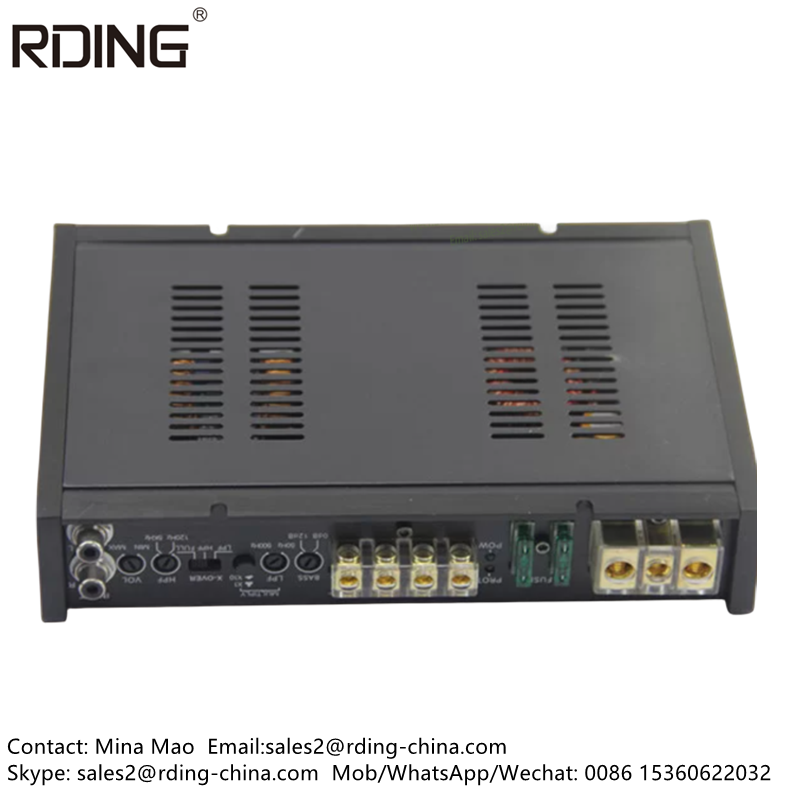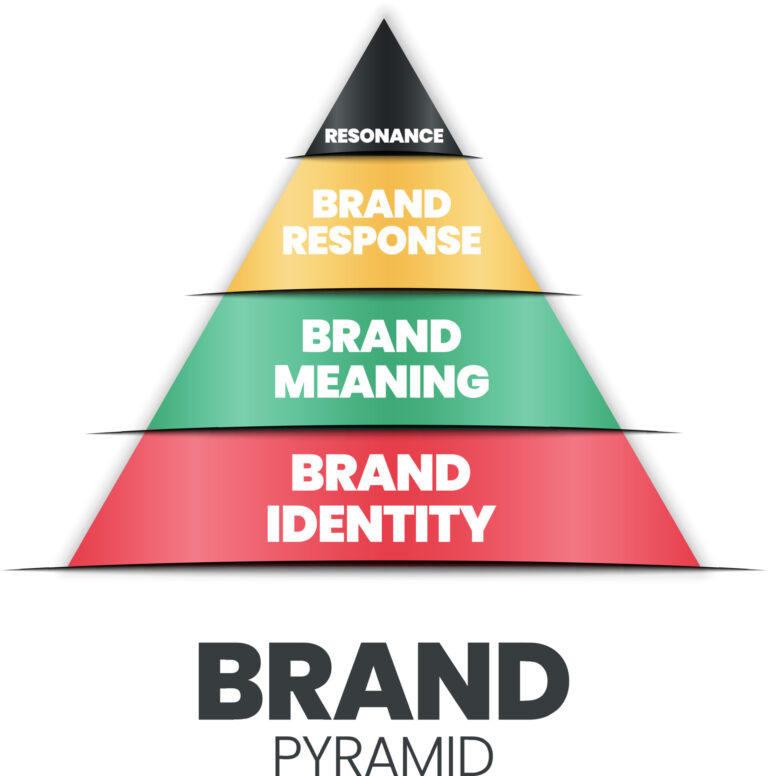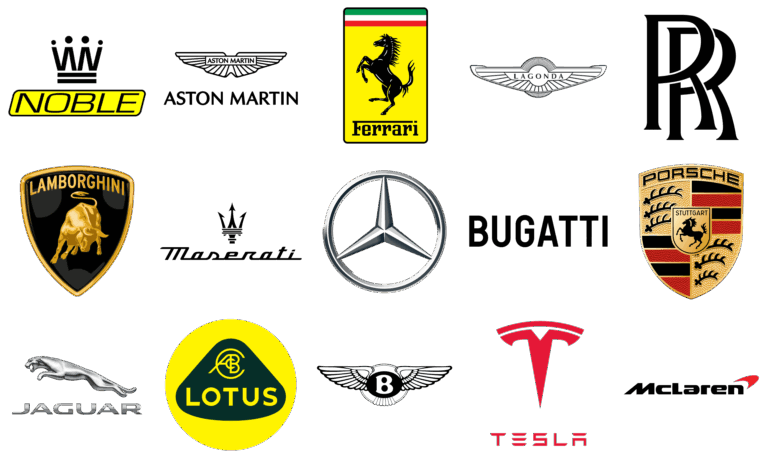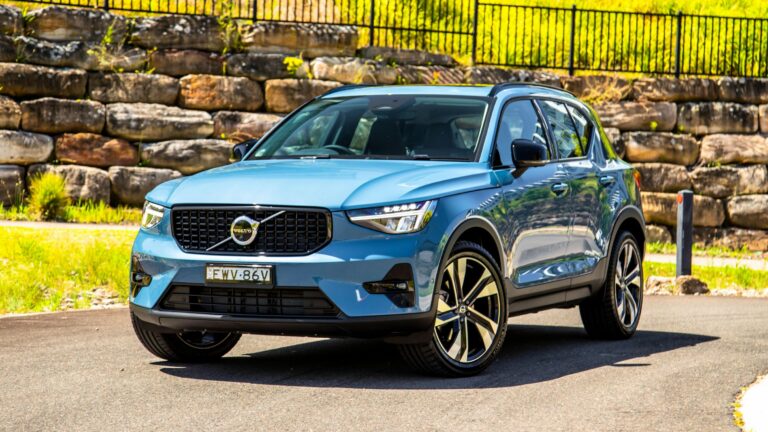What Is The Best Brand Of Car Amplifier? Unveiling the Power Behind Your Sound System
What Is The Best Brand Of Car Amplifier? Unveiling the Power Behind Your Sound System cars.truckstrend.com
In the quest for the ultimate in-car audio experience, a car amplifier stands as a pivotal component, often overlooked but undeniably essential. It’s the powerhouse that takes the subtle audio signals from your head unit and boosts them significantly, providing the raw energy needed to drive your speakers and subwoofers to their full potential. Without a dedicated amplifier, even the most premium speakers will sound flat, underpowered, and fail to deliver the dynamic range and clarity they were designed for.
But with a myriad of brands flooding the market, each promising superior performance, the question inevitably arises: "What is the best brand of car amplifier?" The answer, as with many things in the world of audio, isn’t a simple one-size-fits-all. The "best" brand depends heavily on your specific needs, budget, existing audio components, and ultimately, your personal definition of perfect sound. This comprehensive guide will dissect the world of car amplifiers, explore the crucial factors that define excellence, introduce you to the leading contenders, and arm you with the knowledge to choose the ideal amplifier for your vehicle.
What Is The Best Brand Of Car Amplifier? Unveiling the Power Behind Your Sound System
Understanding Car Amplifiers: More Than Just Volume
Before diving into brands, it’s vital to grasp what a car amplifier truly does. Your car’s head unit (stereo) outputs a very low-level signal. While sufficient for basic factory speakers, it lacks the power to properly drive aftermarket speakers, especially component sets or subwoofers, which often have higher power handling capabilities and lower sensitivities. An amplifier’s job is to take this low-level signal and amplify it to a much higher voltage and current, providing the clean, robust power your speakers need to produce clear, loud, and undistorted sound.
Key Benefits of a Dedicated Car Amplifier:
- Superior Sound Quality: By providing ample clean power, an amplifier reduces distortion, improves clarity, and enhances the dynamic range of your music. You’ll hear details you never noticed before.
- Unleash Speaker Potential: Aftermarket speakers, especially component sets and subwoofers, are designed to handle more power than a head unit can provide. An amplifier allows them to perform as intended.
- Better Bass Response: Subwoofers require significant power. A dedicated mono amplifier ensures deep, impactful, and articulate bass.
- Improved Efficiency: An amplifier can drive speakers more efficiently, leading to less strain on your car’s electrical system compared to a struggling head unit trying to push speakers beyond its limits.
- Customization and Control: Many amplifiers offer built-in crossovers, gain controls, and bass boost features, allowing you to fine-tune the sound to your liking.

Key Factors Defining an "Excellent" Car Amplifier
When evaluating amplifiers, whether from a specific brand or comparing models, several technical specifications and features come into play. Understanding these will help you discern quality and suitability.
-
Power Output (RMS vs. Peak):
- RMS (Root Mean Square) Power: This is the most crucial rating. It represents the continuous power an amplifier can deliver to a speaker. Always match the amplifier’s RMS output to your speakers’ RMS power handling for optimal performance and longevity.
- Peak Power: This is the maximum power an amplifier can produce for a very brief instant. While it sounds impressive, it’s largely irrelevant for real-world listening and should be ignored when making comparisons.
- Matching: Ensure the amplifier’s RMS output per channel (or total RMS for mono blocks) is close to or slightly above your speakers’ RMS power handling.

-
Class of Operation (A/B, D, etc.):
- Class A/B: Traditionally known for excellent sound quality with minimal distortion, but less efficient (around 50-60%), generating more heat. Often used for full-range speakers.
- Class D: Highly efficient (80-90% or more), generating less heat and allowing for smaller amplifier footprints. Historically used for subwoofers due to their efficiency with low frequencies, but modern Class D designs are excellent for full-range applications too, offering superb sound quality. This is the dominant class for most modern car amplifiers.
- Other Classes (A, B, G/H): Less common in car audio but worth noting.
-
Frequency Response:
- Indicates the range of frequencies the amplifier can reproduce. A wider range (e.g., 20 Hz – 20 kHz) is desirable for full-range amplifiers. Subwoofer amplifiers will have a narrower range focused on low frequencies.
-
Signal-to-Noise Ratio (SNR):
- Expressed in dB, this measures the ratio of the desired audio signal to the unwanted background noise. A higher SNR (e.g., >90 dB) means less audible hiss or hum, resulting in cleaner sound.
-
Total Harmonic Distortion (THD):
- Expressed as a percentage, THD measures the amount of unwanted harmonic distortion added to the audio signal. A lower THD (<0.1%) indicates a cleaner, more accurate reproduction of sound.
-
Stability/Impedance Handling:
- Refers to the amplifier’s ability to safely drive speakers with different impedance ratings (ohms). Most amplifiers are stable down to 2 ohms per channel, while many mono amps can go down to 1 ohm, which is crucial for multiple subwoofers. Ensure your amplifier is stable at the impedance of your speaker setup.
-
Features and Controls:
- Crossovers (High-Pass, Low-Pass, Band-Pass): Essential for directing specific frequency ranges to the appropriate speakers (e.g., sending only bass to a subwoofer).
- Gain Control: Matches the amplifier’s input sensitivity to the output voltage of your head unit. Crucial for proper setup.
- Bass Boost: Increases low-frequency output, often adjustable. Use sparingly to avoid distortion.
- Remote Level Control (Bass Knob): Conveniently adjust subwoofer volume from the driver’s seat.
- Protection Circuits: Safeguard the amplifier against overheating, short circuits, or low voltage.
-
Build Quality and Reliability:
- A robust chassis, quality internal components, and efficient heat sinks contribute to an amplifier’s longevity and performance. Brands known for their engineering prowess often excel here.

The Contenders: Top Car Amplifier Brands
While there isn’t a single "best" brand, several manufacturers consistently produce high-quality, reliable, and performance-driven car amplifiers across various price points. Here are some of the most reputable and popular brands, along with their general strengths:
- JL Audio: Consistently ranked among the top. Known for exceptional sound quality, robust build, and innovative technologies (like their patented NexD™ switching technology for Class D amps). Their XD, RD, and HD series are highly regarded for both full-range and subwoofer applications. They offer a fantastic balance of performance and reliability.
- Audison (Elettromedia): A premium Italian brand revered by audiophiles. Audison amplifiers, especially the Voce, Thesis, and AP series, are known for their incredibly clean power, pristine sound reproduction, and sophisticated digital signal processing (DSP) capabilities. They come with a higher price tag but deliver an unparalleled listening experience.
- Focal: Another high-end brand, originating from France, famous for its speakers but also producing superb amplifiers. Focal amps (like the FPX and FDP series) offer excellent sound clarity, dynamic power, and often feature compact designs with premium aesthetics.
- Mosconi: An Italian brand often mentioned in the same breath as Audison, Mosconi is celebrated for its pure sound, meticulous engineering, and integration capabilities, especially with their DSP amplifiers. They cater to the serious enthusiast.
- Zapco: A long-standing American brand with a reputation for building incredibly powerful, high-fidelity amplifiers. Zapco amps are known for their robust power supplies and warm, detailed sound, often favored by competitors in sound quality competitions.
- Rockford Fosgate: A quintessential American car audio brand. Rockford Fosgate amplifiers (Punch, Power, and Prime series) are renowned for their raw power, durability, and no-nonsense performance. They are a go-to for enthusiasts seeking loud, impactful sound and reliable bass.
- Alpine: A Japanese giant in car audio, Alpine offers a wide range of amplifiers known for their reliability, clean power, and seamless integration with other Alpine products. Their V-Power and X-Series amps provide excellent performance and value.
- Kenwood/Pioneer: Both Japanese electronics powerhouses, Kenwood and Pioneer offer a vast selection of car amplifiers that provide solid performance and good value, often pairing well with their respective head units and speakers. They are reliable choices for upgrading factory systems.
- Kicker: Known for their impactful bass and robust products, Kicker amplifiers (like the CX and KX series) deliver substantial power and are popular among those looking for loud and clear sound, especially in the low frequencies.
- Skar Audio: A newer, rapidly growing brand that has gained popularity for offering high-power, budget-friendly amplifiers, particularly for bass applications. While perhaps not at the extreme high-end of sound purity, they offer impressive power for the price.
Choosing the "Best" Amplifier for YOU: A Practical Guide
Given the diversity of brands and models, finding your best amplifier involves a thoughtful process:
-
Define Your Goals:
- Sound Quality (SQ): If pristine, accurate sound is your priority, focus on brands like Audison, Mosconi, Focal, JL Audio, or Zapco, looking for low THD and high SNR.
- Sound Pressure Level (SPL – Loudness): If you want to be heard blocks away, prioritize high RMS power and robust mono-block amplifiers from brands like Rockford Fosgate, Kicker, or Skar Audio.
- Balanced Performance: Most users seek a good blend of clarity and power. Brands like JL Audio, Alpine, and Pioneer offer excellent options here.
-
Match with Speakers/Subwoofers: This is the most critical step.
- RMS Power Matching: Ensure the amplifier’s RMS output closely matches the RMS power handling of your speakers.
- Impedance Matching: Confirm the amplifier is stable at the impedance (ohms) of your speaker configuration (e.g., if you have 2-ohm subwoofers, ensure your mono amp is 2-ohm stable or 1-ohm stable if wiring to 1 ohm).
-
Consider Your Vehicle and Electrical System:
- Space: Amplifiers come in various sizes. Measure the available space (under seats, in the trunk, behind panels) before purchasing. Class D amps are generally more compact.
- Electrical System: High-power amplifiers demand a lot of current. You might need to upgrade your car’s battery, alternator, or wiring if you’re installing a very powerful system to prevent voltage drops and dimming lights.
-
Set Your Budget:
- Amplifiers range from under $100 to thousands of dollars. Be realistic about what you can afford. Remember that "best" also means "best value" for many. Sometimes, a slightly less expensive amplifier paired with proper installation and tuning will outperform an expensive one poorly installed.
-
Installation Considerations:
- Wiring Kit: Always use a high-quality wiring kit with the correct gauge wires for your amplifier’s power output. Skimping here can lead to poor performance, overheating, or even fires.
- Professional vs. DIY: While DIY installation is possible, especially for experienced individuals, professional installation ensures optimal performance, proper wiring, and safety.
Installation Tips & Common Challenges
- Power & Ground: Use adequate gauge power wire (with an inline fuse near the battery) and ensure a clean, short, and secure ground connection to the vehicle’s chassis.
- RCA Cables: Route RCA (audio signal) cables away from power wires to prevent noise (alternator whine).
- Gain Setting: This is critical. Do not use the gain knob as a volume control. Set it correctly to match your head unit’s output to prevent distortion. Many resources and tools (like a digital multimeter or oscilloscope) can help.
- Crossovers: Properly set high-pass filters for full-range speakers and low-pass filters for subwoofers to ensure each speaker plays only the frequencies it’s designed for.
- Troubleshooting: Common issues include amplifier going into "protect" mode (often due to overheating, short circuits, or incorrect impedance), alternator whine (poor grounding or RCA routing), and lack of power (blown fuse, bad ground).
Table Price: Representative Car Amplifier Brands and Price Ranges
Please note: Prices are estimated and can vary significantly based on the specific model, power output, features, retailer, and sales. This table provides a general idea of where each brand typically sits in the market for common amplifier types (2-channel for speakers, Mono for subwoofers, 4-channel for multiple speakers).
| Brand | Typical Amplifier Type & Power Range (RMS) | Estimated Price Range (USD) | Key Strengths |
|---|---|---|---|
| Audison | 2-Ch (100-250W/ch), Mono (500-2000W), 4-Ch | $500 – $3,000+ | Audiophile sound quality, pristine signal, advanced DSP, premium build |
| JL Audio | 2-Ch (75-300W/ch), Mono (250-1500W+), 4-Ch | $300 – $1,500+ | Excellent sound, reliable power, compact designs (NexD), robust |
| Focal | 2-Ch (75-200W/ch), Mono (400-1000W), 4-Ch | $400 – $1,500 | High-fidelity sound, elegant design, compact footprints |
| Mosconi | 2-Ch (100-200W/ch), Mono (500-1500W), DSP Amps | $600 – $2,500+ | Pure sound, meticulous engineering, advanced DSP integration |
| Zapco | 2-Ch (100-300W/ch), Mono (500-2500W), 4-Ch | $400 – $2,000+ | High-power, warm detailed sound, robust power supplies |
| Rockford Fosgate | 2-Ch (50-200W/ch), Mono (300-2500W+), 4-Ch | $200 – $1,000+ | Raw power, durability, impactful bass, classic American car audio feel |
| Alpine | 2-Ch (50-150W/ch), Mono (250-1200W), 4-Ch | $180 – $800 | Reliable, clean power, good value, seamless system integration |
| Kicker | 2-Ch (50-150W/ch), Mono (300-2000W+), 4-Ch | $150 – $900 | Strong bass performance, robust builds, good power-to-price ratio |
| Kenwood | 2-Ch (40-100W/ch), Mono (250-1000W), 4-Ch | $100 – $500 | Solid performance, good value, reliable, entry-to-mid range options |
| Pioneer | 2-Ch (40-100W/ch), Mono (250-1000W), 4-Ch | $100 – $500 | Dependable, good value, wide range of models, suitable for upgrades |
| Skar Audio | Mono (500-3000W+), 4-Ch (75-150W/ch) | $100 – $700 | High power for the price, popular for bass-heavy systems, budget-friendly |
Note: The power ranges are typical examples. Each brand offers a wide array of models with varying power outputs.
Frequently Asked Questions (FAQ)
Q1: Do I really need an amplifier for my car audio system?
A1: If you’re serious about sound quality, want to drive aftermarket speakers or subwoofers to their full potential, or simply want louder, clearer sound without distortion, then yes, an amplifier is highly recommended. Factory head units often lack the power and features for a truly dynamic listening experience.
Q2: What’s the difference between RMS and Peak power?
A2: RMS (Root Mean Square) power is the continuous, real-world power an amplifier can deliver. Peak power is the maximum power it can produce for a very brief moment. Always use RMS ratings when comparing amplifiers and matching them to your speakers.
Q3: Can I use an amplifier with my factory stereo?
A3: Yes, many modern amplifiers have "high-level" or "speaker-level" inputs, allowing them to connect directly to your factory stereo’s speaker outputs. However, for the best sound quality, an aftermarket head unit with RCA pre-outs is often preferred.
Q4: What is amplifier "class" (e.g., Class A/B, Class D)?
A4: Amplifier class refers to its internal design and operating principles, primarily affecting efficiency and heat generation. Class A/B offers good sound quality but is less efficient. Class D is highly efficient, generates less heat, and allows for compact designs, making it very popular for car audio.
Q5: How do I know what size (power) amplifier I need?
A5: You need to match the amplifier’s RMS power output to the RMS power handling of your speakers. If your speakers are rated for 75 watts RMS each, you’d look for a 2-channel amplifier that delivers around 75-100 watts RMS per channel. For subwoofers, match the mono amplifier’s total RMS output to the subwoofer’s RMS power handling.
Q6: Why is my amplifier going into protect mode?
A6: "Protect mode" is a safety feature. Common reasons include:
- Overheating: Poor ventilation, overdriving the amp.
- Low Impedance: Trying to run speakers at an impedance lower than the amp is stable for.
- Short Circuit: Frayed speaker wires touching, faulty speaker.
- Low/High Voltage: Issues with the car’s electrical system (e.g., dying battery, weak alternator).
Q7: Is a more expensive amplifier always better?
A7: Not necessarily. While higher-priced amplifiers often use premium components and offer superior sound quality and features, diminishing returns apply. An amplifier that perfectly matches your speakers and is properly installed and tuned will almost always sound better than an expensive, mismatched, or poorly installed one. Focus on value, reputable brands, and matching components.
Concluding Thoughts
The quest for the "best brand of car amplifier" is a journey unique to each individual. There isn’t one undisputed champion, but rather a collection of exceptional manufacturers who excel in different areas – be it raw power, pristine sound quality, compact design, or outstanding value.
The true "best" amplifier for you will be one that:
- Matches the RMS power and impedance of your speakers and subwoofers.
- Aligns with your primary audio goals (SQ, SPL, or balanced).
- Fits within your budget and vehicle’s physical constraints.
- Comes from a reputable brand known for quality and reliability.
- Is installed and tuned correctly.
By understanding the key technical aspects, exploring the strengths of leading brands, and following a practical selection process, you can confidently choose a car amplifier that will transform your in-car audio system from merely playing music to delivering an immersive, dynamic, and truly enjoyable listening experience. Invest wisely, install correctly, and prepare to rediscover your favorite tunes on the open road.






